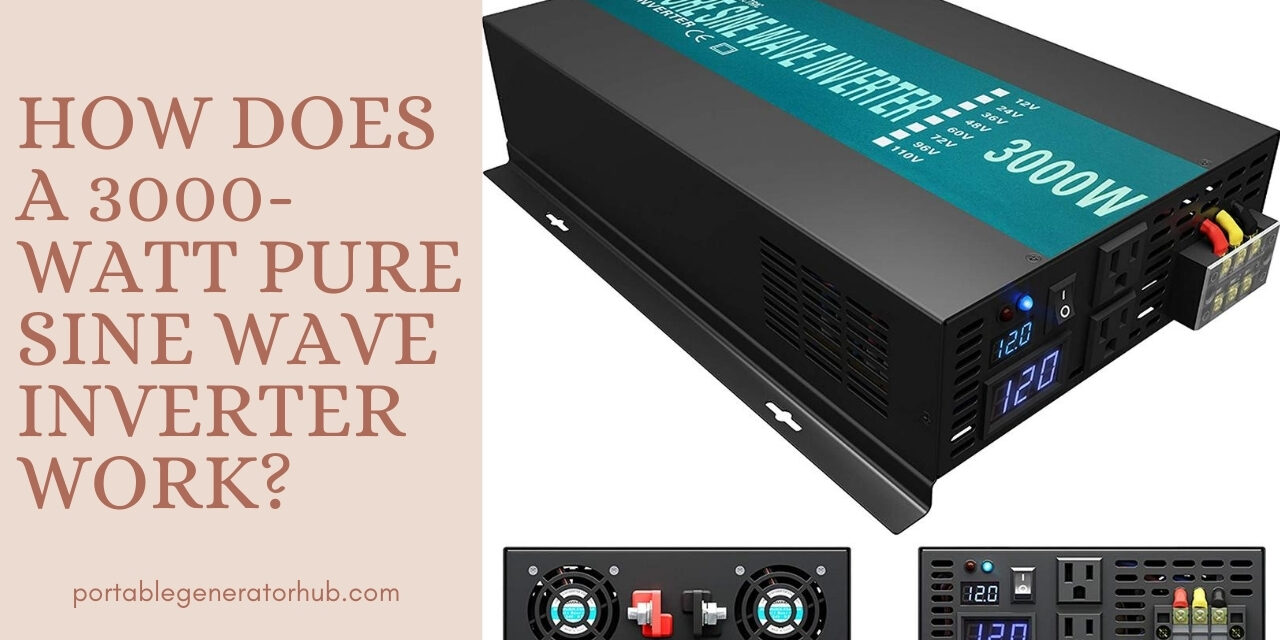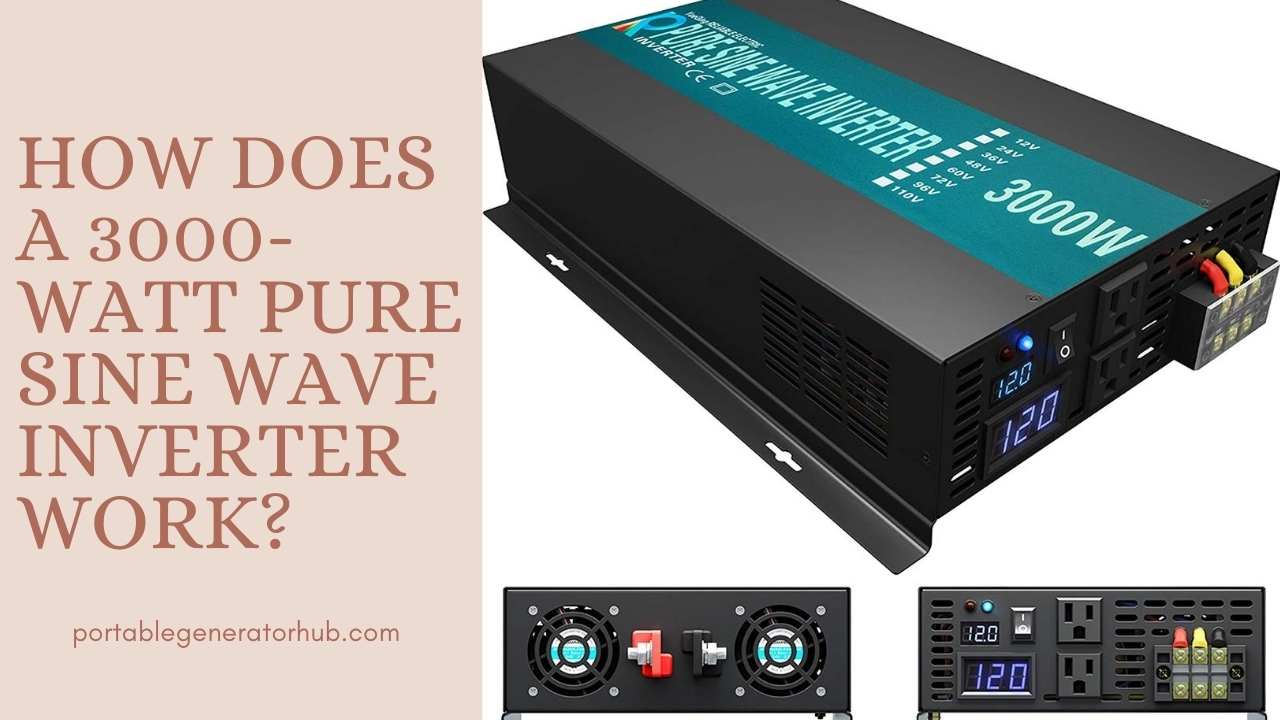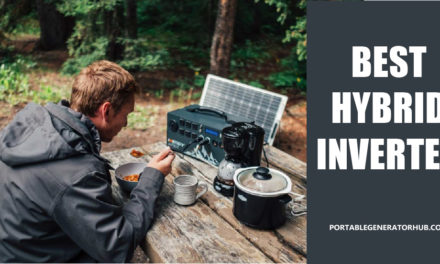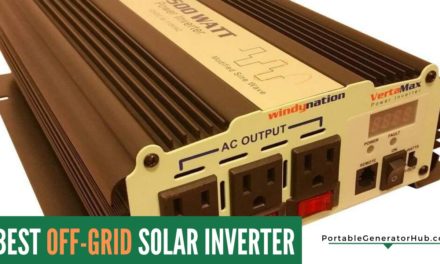Most of the appliances we use at home are powered by electricity. Even devices that are powered by battery need electricity to charge. These days, RVs and boats have appliances like refrigerators, TV sets, and air conditioners. They all need electricity to work. That’s why the demand for alternative power supply keeps increasing.
In fact, allowing the sun to shine without converting it to power seems like a total waste of sunlight now. So, the solar power system is gradually becoming an indispensable part of building a home. You can make it an off-grid or on-grid power supply.
The only challenge with solar panels is that they generate DC current. This form of electricity is not usable for electrical appliances. So, it has to be converted to AC current. That is the function of inverters. There are several types of inverters. One of them is the Pure Sine Wave Inverter. That is the focus of this write-up.
In this article, we will discuss what a 3000-Watt Pure Sine Wave Inverter is and how it works. To understand what a pure sine wave inverter does, you need to know a little about waves. Inverters send two major types of waves. One of them is the modified sine wave, while the other is the pure sine wave.
Pure sine wave flows into appliances in a smooth and seamless fashion. On the other hand, the modified sine wave flows in a chunky manner. This makes appliances work harder and perform less.
In fact, some appliances cannot run on modified sine waves. Those that accept it do not last as long as they should. This is why people prefer pure sine wave, and as such, a pure sine wave inverter is more in demand.
What is a 3000-Watt Pure Sine Wave Inverter?
Putting it in simple terms, it is an inverter that converts DC current from solar panels or batteries to AC currents in the form of a pure sine wave. As its name implies, the device outputs a maximum of 3000 watts.
How Does it Work?
To explain how this inverter works, we need to outline its basic parts and functions.
Switch – This is self-explanatory. You can turn it on or off through the switch.
An Outlet for AC Output – This is where you plug the appliances you want to power with your inverter.
Micro Controller – This is said to be the heart of the inverter. It controls the distribution of electric signals based on power requirements. It also manages the safety features of the device.
DC Input Socket – This is where the cable from the DC power source is connected. Remember, your inverter will take DC current from your alternative power source (batteries or solar panels) and convert it to AC current.
BJT – This stands for Bipolar Junction Transistor. It controls the flow of electrical current in a pure sine wave inverter. It helps as a relay driver, amplifier, and switch. The two major types of BJT are PNP and NPP transistors.
Case – This is the housing of the inverter.
MOSFET – This acronym stands for Metal Oxide Semiconductor Field Effect Transistor. It is a component that is controlled by voltage. Its main function is to switch electronic signals.
Heat sink – The heat sink helps to disperse heat to prevent overheating. That’s why a fan is usually attached to it. The fan blows it to cool the heat. When the inverter gets too hot, it could malfunction. That is why the heat sink is important.
Fuse – The fuse protects the inverter from an excessive flow of current. When that happens, the fuse will get blown up instead of other components of the inverter to get damaged.
Transformer – This component steps up or steps down the electrical voltage to a safe level, depending on the situation.
Now that you know the basic parts of a pure sine wave inverter let’s explain how the inverter works. When it receives the DC current from either solar panels or batteries, the transformer will step it down or up depending on how high the voltage is.
Then the current is gradually converted to AC current in the form of a pure sine wave. So, when any appliance is plugged into it, the inverter will send the current to the appliance. This operation is divided into three stages that have been outlined below.
Stages of a 3000-Watt Pure Sine Wave Inverter’s Operation
The three stages of operation are:
- Oscillator Stage
- Amplifier Stage
- Output Transformer Stage
1. Oscillator Stage
This is the first stage. The inverter generates oscillating pulses here. This is done through an IC circuit. The voltage generated at this stage is very low and cannot power any appliance. So, it is amplified. That takes us to the next stage.
2. Amplifier Stage
This is also called the Booster Stage. The voltage is amplified at this level. The amplified voltage is now sent to the output transformer for further amplification.
3. Output Transformer Stage
At this stage, the current is stabilized for smooth and seamless transmission before sending it out into appliances. The output transformer carries out this function. This process results in an induced stepped-up voltage, which is used by power inverters to power AC appliances.
9 Uses of a 3000-Watt Pure Sine Wave Inverter:
You can use the pure sine wave inverter to run the following devices:
- Sewing machines
- Refrigerators, TV sets, microwaves
- Photocopiers, laser printers
- Medical equipment like oxygen concentrators
- Laptop computers
- Furnaces and pellet stoves
- Fluorescent lights
- Digital clocks
- Battery charges
Benefits/Advantages of a 3000-Watt Pure Sine Wave Inverter:
Here are the benefits of the device.
1. It Provides Clean Energy
The first and most important benefit of this model of inverter is that it provides clean energy, just like the one you get from the power station. The energy is eco-friendly because it is devoid of pollution.
2. It Boosts Performance
When appliances are supplied pure sine wave currents, they perform faster and better. For example, we noticed that microwave ovens cook faster when they receive pure sine wave than when they run on the modified sine wave. So, if you want your appliance to perform better, install this pure sine wave inverter.
3. It Saves Energy
Using a microwave oven as an example, when it cooks faster, it will save more energy than when it runs longer. So, using this inverter helps you to save a lot of energy.
4. The Inverter also Helps to Reduce Noise
Appliances make less noise when they are using a pure sine wave. This is unlike the modified sine wave that makes them noisy. This is another reason to consider this inverter. If noise is a major concern for you, this inverter should top your consideration list.
5. Reduced Signal Interference
When your TV, stereo, or radio is powered with a pure sine wave, it will encounter a reduced signal interference. So, if any of the appliances struggles with signal interference, you may need to change your inverter to this one to enable you to get a pure sine wave.
6. The Inverter is Protected from Overheating
When the temperature of the inverter gets too high, its heat sensor will trigger a shutdown immediately. This helps to protect the device, and all the appliances plugged into it. The inverter is also protected from high current.
When the current passed into it is higher than the permissible level, the inverter will shut down immediately. In the same way, the device will shut down when its input voltage becomes too high or too low. So, this pure sine wave inverter gives you complete peace of mind.
7. It gives a Stable Voltage
Modified sine wave gives fluctuating voltage, and this can harm your appliances. This inverter gives stable voltage, and this is safe for electrical appliances. In fact, most pure sine wave inverter gives 230 volts.
8. The Inverter is Compact and Portable
Since this device is portable and light, you can place it anywhere you want. Its portability makes it ideal for camping, boating, and RVs. If you’re a fan of the great outdoors, this inverter should be your best bet.
9. Little or no Maintenance
The inverter requires no maintenance. You only need to check your car batteries regularly. This is an area where this inverter is a better choice than a generator.
You will need to fuel your gen before it runs. Also, you have to service it and change its oil periodically. This inverter does not require all that.
10. It Supports all Electrical Appliances
While the modified sine wave does not support every appliance, the pure sine wave works with every appliance, tool, and equipment. So, it is always a better choice. That is why we recommend the inverter to you regardless of the kind of equipment you are using.
11. Extended Power Backup
Pure sine wave inverters provide an extended power backup, but you can’t get that from a modified sine wave. This is because a pure sine wave is just like what you get from the power grid. Also, with a pure sine wave, you’ll get a steady 230 volts.
On the other hand, the voltage from a modified sine wave fluctuates. It can get much lower than 230 volts, and it can get as high as 290 volts. That is why it is dangerous. In fact, appliances like a grinder will not work with a modified sine wave.
Disadvantages of a 3000-Watt Pure Sine Wave Inverter
After discussing the benefits of a pure sine wave inverter, it is necessary to also mention its few disadvantages so you can have a balanced view of the product. On that note, here are the two disadvantages of the inverter.
1. It is Expensive
The inverter is very expensive. A pure sine wave inverter is more expensive than its modified sine wave counterpart. So, this inverter is more expensive than a modified sine wave inverter that outputs 3000 watts.
This is basically because of the sophisticated technology behind this inverter. If what you need the inverter for are appliances that can be powered by a modified sine wave, maybe you should go for that.
2. Shorter Battery Runtime
Another problem with this inverter is a shorter battery runtime. This means that your battery will get weak faster when using pure sine wave inverter. This is because the inverter has heavy-duty transformers that consume a lot of power.
In spite of its two shortcomings, this inverter is still a good product, and it is better than a modified sine wave inverter. That is why we will always recommend it over other inverters.
Safety Tips on The Installation and Use of a Pure Sine Wave Inverter
1. Always place the inverter on a flat surface either vertically or horizontally.
2. Always keep the inverter dry. Never let it come in contact with rain or water. This is because liquids are good conductors of electricity. So, touching the inverter with a wet hand could lead to serious injury or death.
3. Also, it should not be placed near acid, gasoline, or fumes.
4. Don’t place it near hot objects. You should also shield it from the sun. It works best between 50 degrees and 80 degrees F.
5. Put it in a well-ventilated location while in use. This helps to disperse heat from it.
6. There should be clearance around the top and the side of the inverter. These are points where air flows into it.
7. Make sure you read the user manual from the beginning to the end before you install and start using it. In fact, we advise that you hire an electrician to install it for you. While we encourage a do-it-yourself attitude, we don’t encourage you to practice it on electrical devices.
Final Verdict
Now that you have learned all that you should know about a 3000-watt pure sine wave inverter, what do you feel? Which will you choose between a pure sine wave inverter and a modified sine wave inverter? As for us, we will recommend the former. It is better, safer, and more useful than a modified sine wave inverter.






